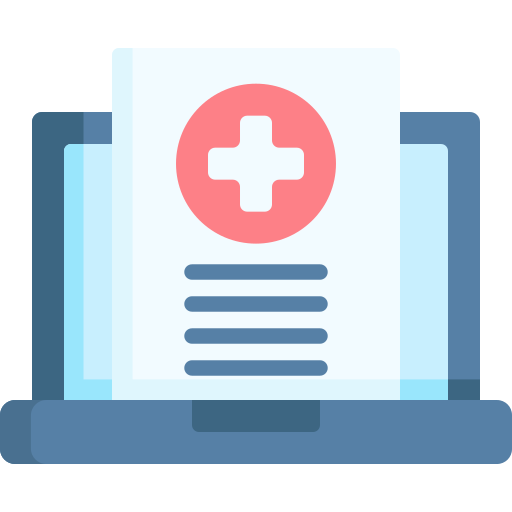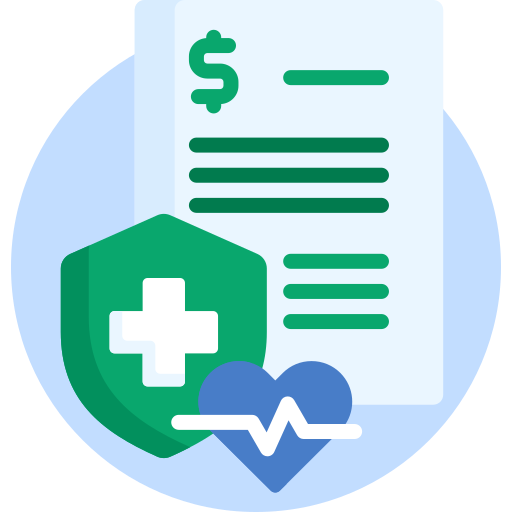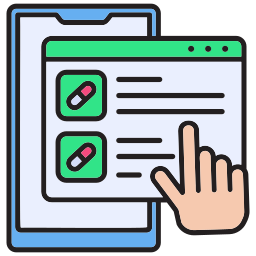SMART on FHIR enables apps to plug directly into EHR systems like Epic EHR, Cerner EHR, and Athenahealth EHR. That means healthcare teams can access key insights—medication history, lab results, and vitals—without jumping between systems or duplicating data. For providers, it’s not just about access. It’s about delivering care that’s informed, timely, and consistent across settings.
What makes SMART on FHIR especially valuable is its developer-friendly framework. It supports modern authentication (OAuth2), lets apps run securely within EHR workflows, and uses standard FHIR APIs to pull patient data. Whether you’re building a custom clinical dashboard or launching a remote monitoring tool, SMART on FHIR simplifies the process—and keeps you within compliance boundaries like HIPAA and the Cures Act.
At Mindbowser, we’ve helped teams build and deploy SMART on FHIR apps that improve decision-making, reduce cognitive overload for clinicians, and bring measurable impact to care delivery. From medication tracking tools to patient engagement apps, the potential is huge—and it’s only just beginning.
The Shift Toward Smart on FHIR
In recent years, the demand for healthcare apps that can easily integrate with EHR systems has skyrocketed. For companies focusing on specialized care areas, such as neurology, patient data accessibility plays a critical role in both diagnosis and treatment. However, many healthcare providers still face challenges in integrating new technologies with their existing systems. That's where the power of SMART on FHIR comes in.
SMART on FHIR is a widely adopted framework that enables apps to be integrated with EHR systems, such as Epic and Cerner. This standard not only ensures that data flows seamlessly between different systems but also allows developers to create apps that are highly customizable and scalable, meeting the unique needs of healthcare providers.
Related Read: Decoding SMART on FHIR for Healthcare Interoperability
Overcoming Real-World Challenges with SMART on FHIR
Despite the promise of integration, healthcare organizations face significant challenges when adopting new technologies. These challenges can include:
- Resistance to Change: Many healthcare providers are used to their existing workflows and systems, which can create a barrier to adopting new technologies.
- Data Privacy Concerns: Ensuring the security and privacy of patient data is paramount, particularly with increasing regulatory pressures like HIPAA.
- Regulatory Compliance: Healthcare systems are governed by strict regulations, making compliance a critical consideration when adopting new technologies.
SMART on FHIR addresses these challenges by providing a standardized, secure, and scalable framework for app development. It allows healthcare apps to integrate seamlessly into existing systems, ensuring that providers can deliver high-quality care without disrupting their operations or violating regulatory standards.
The Promise of Scalability in Healthcare Integration
Building an effective healthcare app is no small feat, especially when dealing with sensitive patient data. But scalability remains one of the biggest hurdles to widespread adoption. While many healthcare apps are functional, the challenge lies in making them easily adaptable across various healthcare systems. For example, patients using an app to track their symptoms may need a more efficient way to share that data with their physicians without depending on cumbersome manual processes or limited networks.
The vision of a SMART on FHIR app is to solve this problem by enabling seamless data sharing within the healthcare ecosystem. With the right development approach, a SMART on FHIR app can bridge the gap between patients, their doctors, and their healthcare system. Whether it's tracking patient symptoms, sharing clinical data, or integrating with clinical trial recruitment systems, this app can become a vital tool in improving patient care.
Customization and Integration: The Key to Success
A one-size-fits-all approach rarely works in healthcare. Every healthcare provider has unique requirements, and apps need to be flexible enough to meet those demands. For example, an app may need to align with a provider's specific branding or support particular clinical workflows. Here, the integration capabilities of SMART on FHIR shine, offering developers the tools to customize their solutions while ensuring seamless interaction with major EHR systems.
For healthcare organizations looking to maximize their technology investments, SMART on FHIR apps offer the ability to easily integrate with existing infrastructure. This customization makes it easier for providers to onboard new technologies without disrupting their existing operations. Moreover, with the ability to securely access and update data in the EHR system, these apps play a crucial role in streamlining patient care and clinical decision-making.
How SMART on FHIR Solves Key Stakeholder Challenges
SMART on FHIR apps offer specific benefits for all stakeholders in the healthcare ecosystem:
- For Patients: These apps provide patients with more control over their health data, enabling them to track symptoms, access reports, and communicate directly with their healthcare providers.
- For Clinicians: Healthcare providers can access a comprehensive view of patient data, improving decision-making and reducing administrative burdens, all while ensuring data security and compliance.
- For Healthcare Providers: The seamless integration of SMART on FHIR apps with EHR systems helps streamline workflows, reduce errors, and improve overall efficiency, making it easier for providers to deliver high-quality, personalized care.
The Role of Co-Development in Successful Integration
Successful app development, especially in the healthcare space, requires collaboration. One of the key factors that can accelerate the development process is a co-development model, where healthcare providers and tech companies work together to create tailored solutions. This approach allows both parties to combine their expertise—whether it’s in clinical workflows, patient care, or software development—ensuring that the end product is not only functional but also optimized for real-world use.
At Mindbowser, we offer our expertise as an extension of your team. Our focus is on integrating solutions that work well with EHR systems and customizing them to meet the specific needs of your healthcare organization. From the discovery phase to onboarding and deployment, our collaborative approach ensures a smooth integration process and that the solution meets your expectations.
Timeline for Development and Integration
Building and deploying a SMART on FHIR app is not an overnight process. Here’s a general timeline for how the process might unfold:
- Discovery Phase (2-4 weeks): Understanding the healthcare provider’s unique needs and determining how the app will integrate with their systems.
- Development Phase (2-3 months): Building the app, ensuring it meets all integration and compliance requirements.
- Testing and QA (1-2 months): Testing the app to ensure it works seamlessly within the EHR systems and adheres to privacy and security standards.
- Deployment (1 month): Launching the app, training staff, and ensuring full adoption.
While these phases can vary depending on the integration's complexity and the healthcare organization’s needs, having a clear timeline helps set expectations for all parties involved.
Ensuring Compliance and Security
In the healthcare sector, compliance with regulations like HIPAA and SOC2 is non-negotiable. SMART on FHIR apps are designed with these regulations in mind, ensuring that patient data is handled securely and in compliance with industry standards. By using secure authentication protocols and encrypted data transmission, these apps provide a high level of security that healthcare providers and patients can trust.
The Future of Healthcare Apps: Trends to Watch
As healthcare continues to shift toward more personalized and data-driven care, the role of apps like those built on SMART on FHIR will only increase. Some key trends to watch include:
- AI and Machine Learning: The integration of AI and ML into SMART on FHIR apps can enhance decision-making, predict patient outcomes, and provide personalized care recommendations.
- Data Analytics: With access to vast amounts of patient data, SMART on FHIR apps can empower healthcare providers with actionable insights that drive better care.
- Telemedicine: With the rise of virtual care, SMART on FHIR apps can integrate with telemedicine platforms to provide a seamless experience for both patients and providers.

Pravin Uttarwar, CTO of Mindbowser
As the CTO of Mindbowser, a healthcare-focused software development company, I am dedicated to delivering cutting-edge digital solutions that transform patient care and operational efficiency. With over 16 years of experience and as an MIT alumnus, I specialize in healthcare interoperability, FHIR-compliant systems, and AI-powered platforms, crafting scalable products and architectures tailored to the unique needs of healthcare providers and enterprises.
I have spearheaded the development of over 100 products and platforms, guiding them from concept to full-fledged solutions. My expertise extends to scaling remote tech teams, driving EHR integrations, and building secure, cloud-native healthcare solutions. By shaping technology visions and roadmaps, I help clients achieve long-term growth and success in the rapidly evolving healthcare landscape.
HealthConnect CoPilot enabled us to access real-time patient health data through integration with Apple HealthKit, enhancing care delivery while maintaining HIPAA compliance. This led to personalized care and improved outcomes for patients.

AI-enhanced Obstetrics Clinical Decision Support Platform
HealthConnect CoPilot's integration with Epic's Hyperspace has transformed our workflow. Automated post-delivery examinations and HL7 protocol use ensure accurate updates to Epic. Their expertise empowers informed decision-making in childbirth

Top Provider for Customized Healthcare Solutions
HealthConnect CoPilot's helped us to integrate with leading tracking devices such as Apple Watches and Fitbit. This integration enables effortless syncing of health data, providing users with real-time insights displayed directly on our flagship products: smart mirrors and digital calendars.

A Provider of Customizable Display Solutions
Post a comment Cancel reply
Related Posts
TEFCA in Healthcare: A Complete Guide
Healthcare has long struggled with fragmented data systems. Patient records are often locked within isolated…
Model Context Protocol (MCP): Revolutionizing Healthcare Chatbots with FHIR Integration
Healthcare technology is experiencing a paradigm shift with the emergence of Anthropic’s Model Context Protocol…
Healthcare Integration: The Understanding & Its Impact in Healthcare
Healthcare integration refers to connecting various systems, applications, and data sources within the healthcare ecosystem…
Value-based Care vs Fee-for-Service
Healthcare payment systems can feel a bit like deciding between paying for each item on…
Checklist for EHR Integration in the Healthcare System
EHR integration in the healthcare system refers to the seamless connection of EHR systems with…
Integrating FHIR and Genomics: How AI is Shaping the Future of Medicine
AI is transforming the way medicine approaches personalized healthcare, particularly through genomics. By analyzing vast…









